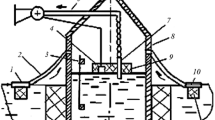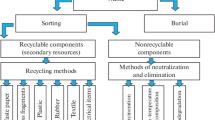Abstract
Efforts must be made by central and local government bodies, and by Party, Soviet, professional, Komsomol, and economic bodies locally to insure that a proper relationship to the environment is an ongoing concern of working teams, directors, and specialists in all branches of the economy and becomes the norm for daily life for the Soviet People.
From “Radical reform in environmental protection in the country,” Pravda, 17 January 1988, From a report by the Central Committee of the CPSU and the USSR Council of Ministers.
Similar content being viewed by others
Literature cited
E. D. Babenkov, Coagulant Water Treatment [in Russian], Nauka, Moscow (1977).
Kh. R. Ismatov, S. A. Zainutdinov, and K. S. Akhmedov, Water-Soluble Polyelectrolytes in Hydrometallurgy [in Russian], Fan, Tashkent (1972).
A. M. Koganovskii, N. A. Klimenko, T. M. Levchenko, et al., Treating and Using Effluents in Industrial Water Supply [in Russian], Khimiya, Moscow (1984).
Author information
Authors and Affiliations
Additional information
Translated from Steklo i Keramika, No. 3, pp. 2–3, March, 1988.
Rights and permissions
About this article
Cite this article
An, R.Y., Gafarova, L.A. & Ludina, F.V. Purifying industrial effluents. Glass Ceram 45, 109–110 (1988). https://doi.org/10.1007/BF00676745
Issue Date:
DOI: https://doi.org/10.1007/BF00676745




